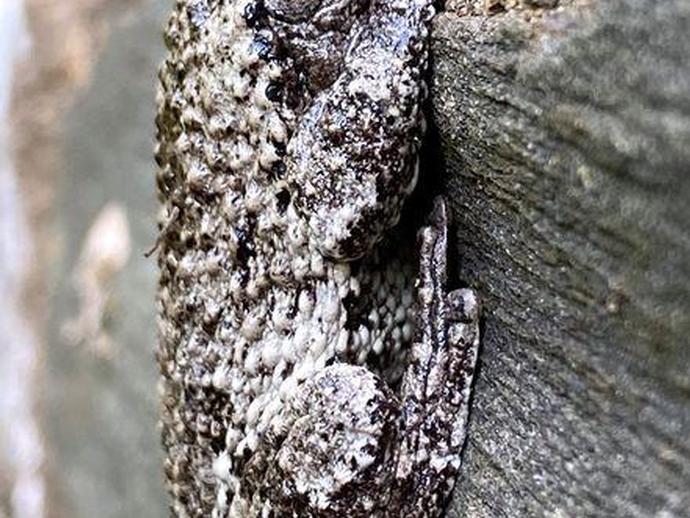June 30, 2021
It's time for the Wednesday edition of #BenInNature presented by our friends at Carter Bank & Trust!
I photographed this tree frog at Fairy Stone State Park a couple of weeks ago. This is normally the part where I'd tell you the scientific name of this little guy, but with these particular treefrogs, it's a little bit complicated!
In Virginia, we have two species of treefrog that are virtually identical: Hyla versicolor, the gray treefrog, and Hyla chrysoscelis, the Cope's gray treefrog. Both species are pretty common, and both have a lot of overlap in their ranges (although generally speaking, you're more likely to find the gray treefrog in the central part of Virginia and Cope's gray treefrog in the eastern and western portions of the state, but again, that's definitely not a hard and fast rule).
Of course, both species have been recorded in Patrick County where I found this one, so that doesn't help us out. According to the Virginia Herpetological Society website, the only way to tell the difference in the field is by listening to the calls of these frogs. This one was a little too bashful to croak, so that doesn't help. Other than the call, the only other way to identify which is which is through genetic analysis. All of this is to say, I have no idea which of the two species this treefrog is; maybe we can call it Schrödinger's treefrog!
No matter which species you're looking at, these frogs have fairly similar behavior. They can very slowly change their color to match their surroundings, appearing gray, green, brown, black, or white. They can also be found in a wide range of habitats, but they're generally arboreal and are most common in forested areas. During the breeding season, however, they'll descend from the trees, and you might even spot them laying eggs in your fountain or water garden!
ABOUT #BenInNature
Social distancing can be difficult, but it presents a great opportunity to become reacquainted with nature. In this series of posts, Administrator of Science Ben Williams ventures outdoors to record a snapshot of the unique sights that can be found in the natural world. New updates are posted Monday - Friday, with previous posts highlighted on the weekends. This series of posts is made possible thanks to the support of VMNH Corporate Partner Carter Bank & Trust (www.cbtcares.com).
NATURE PHOTO IDENTIFICATIONS
If you discover something in nature that you would like help identifying, be sure to message us right here on Facebook with a picture (please include location and date of picture) and we'll have our experts help you identify it!

 Hours & Admissions
Hours & Admissions Directions
Directions

